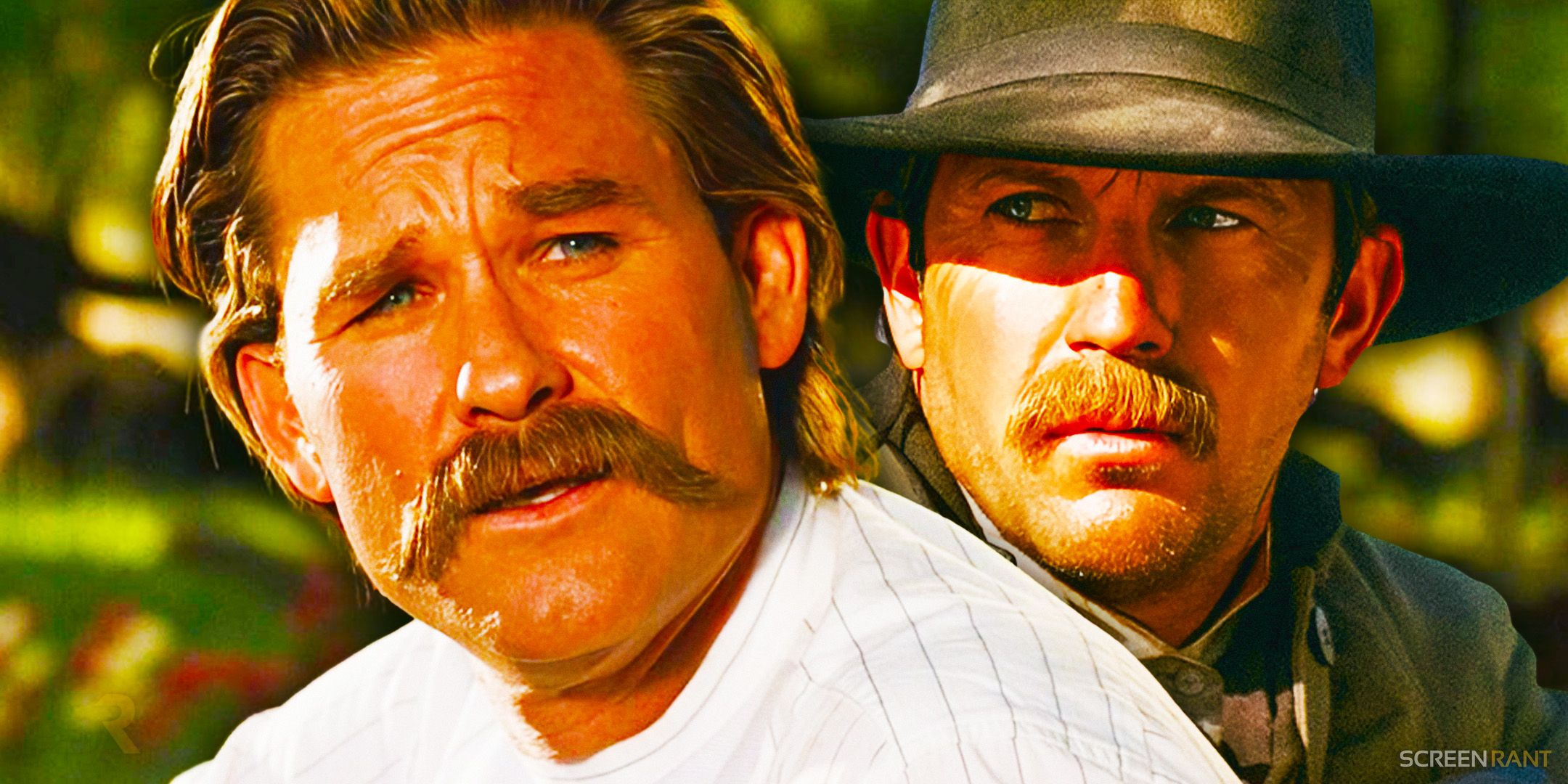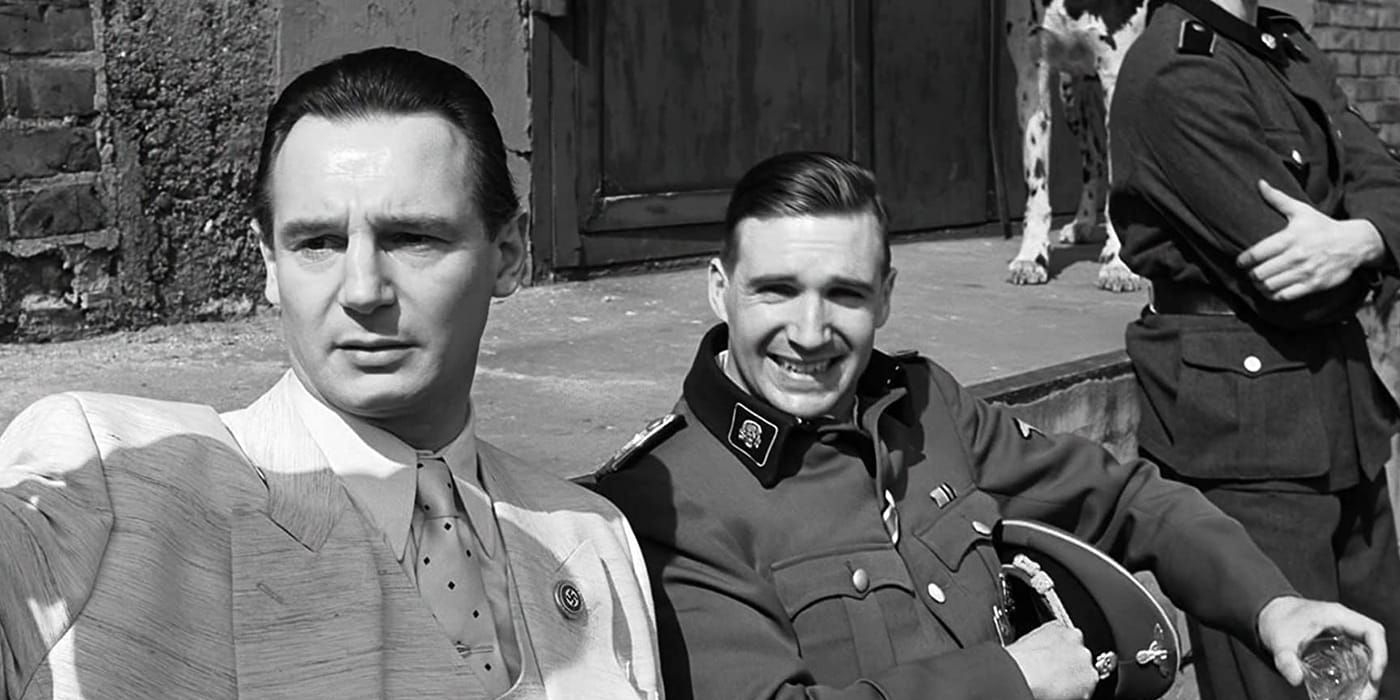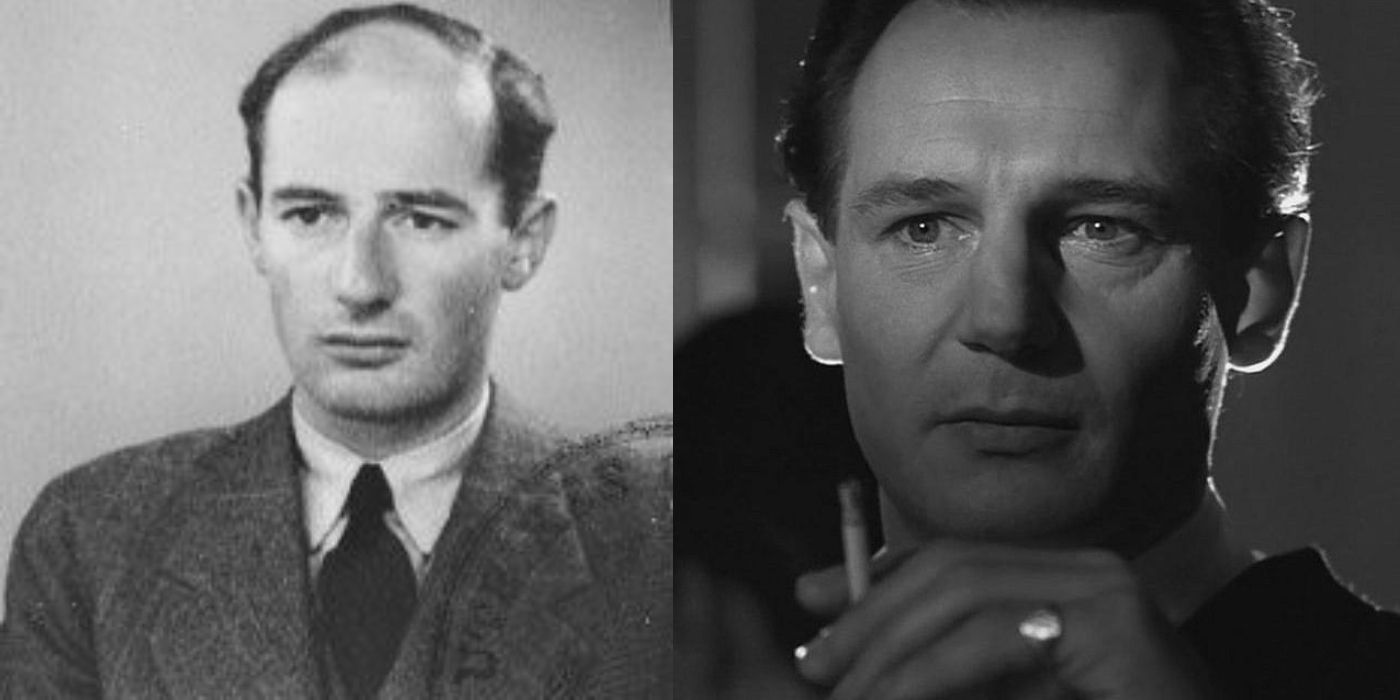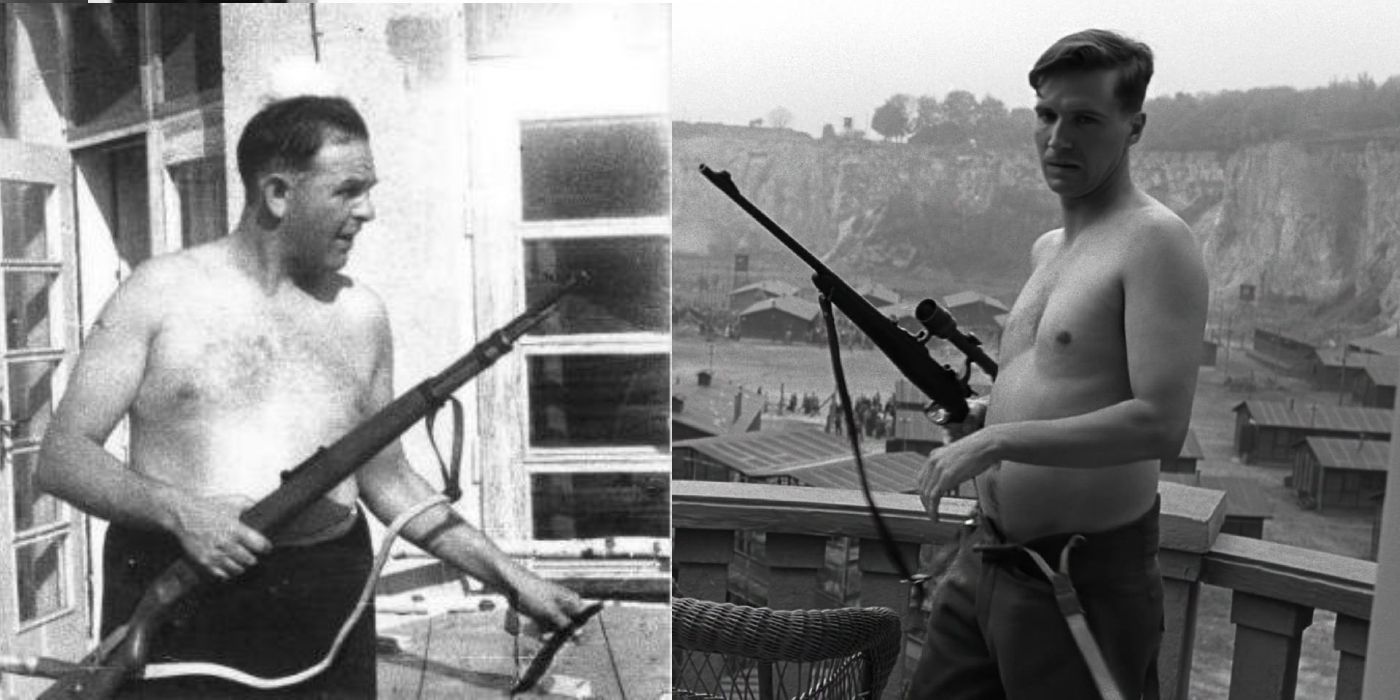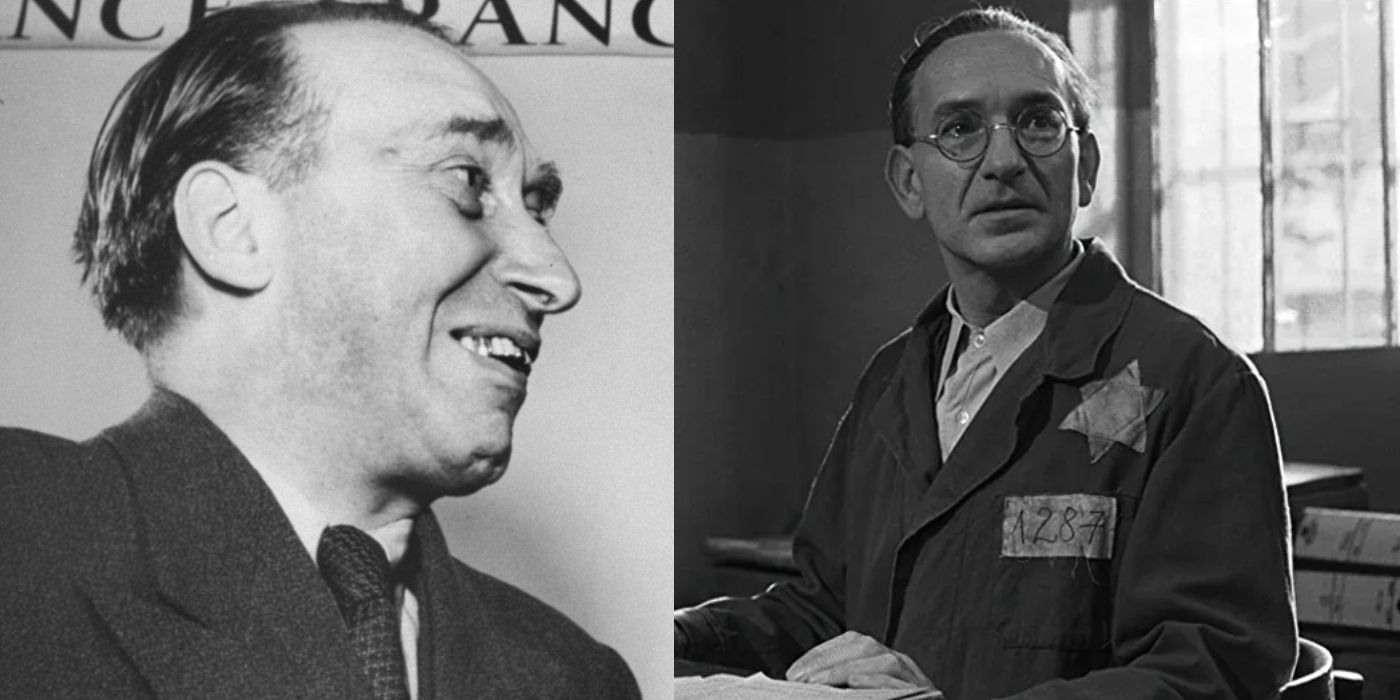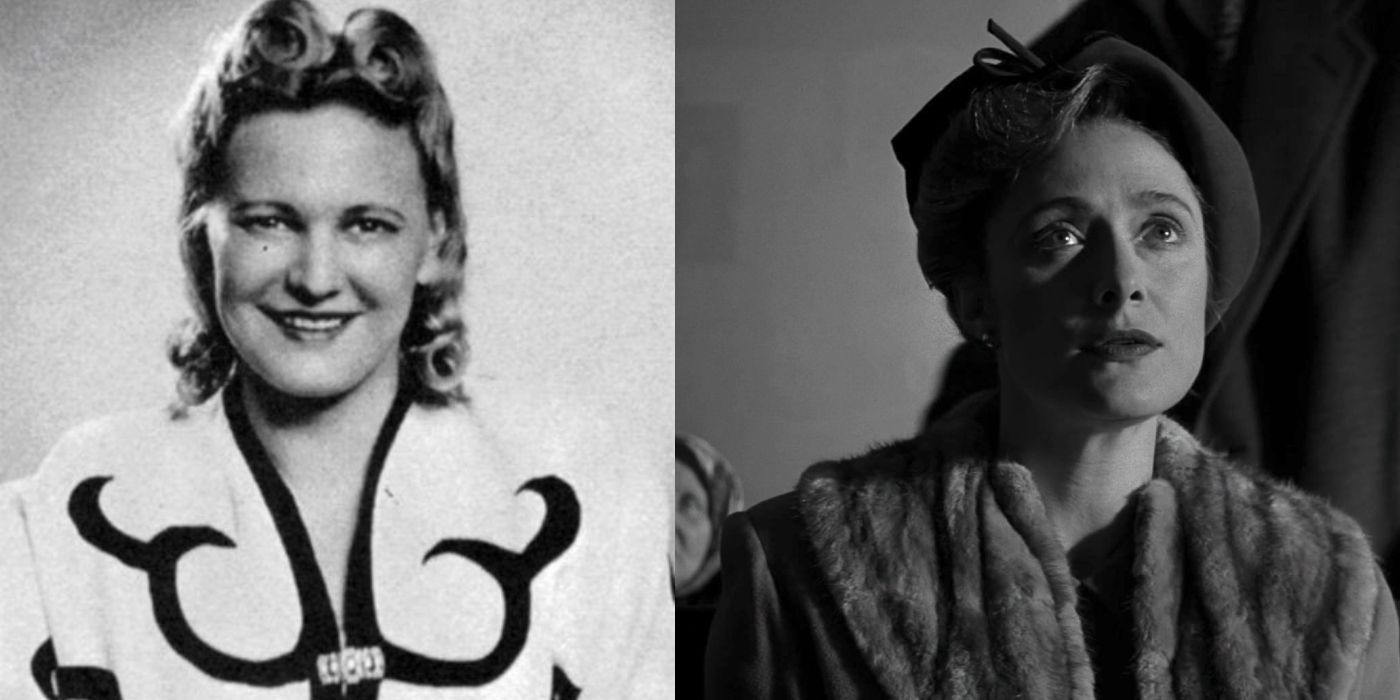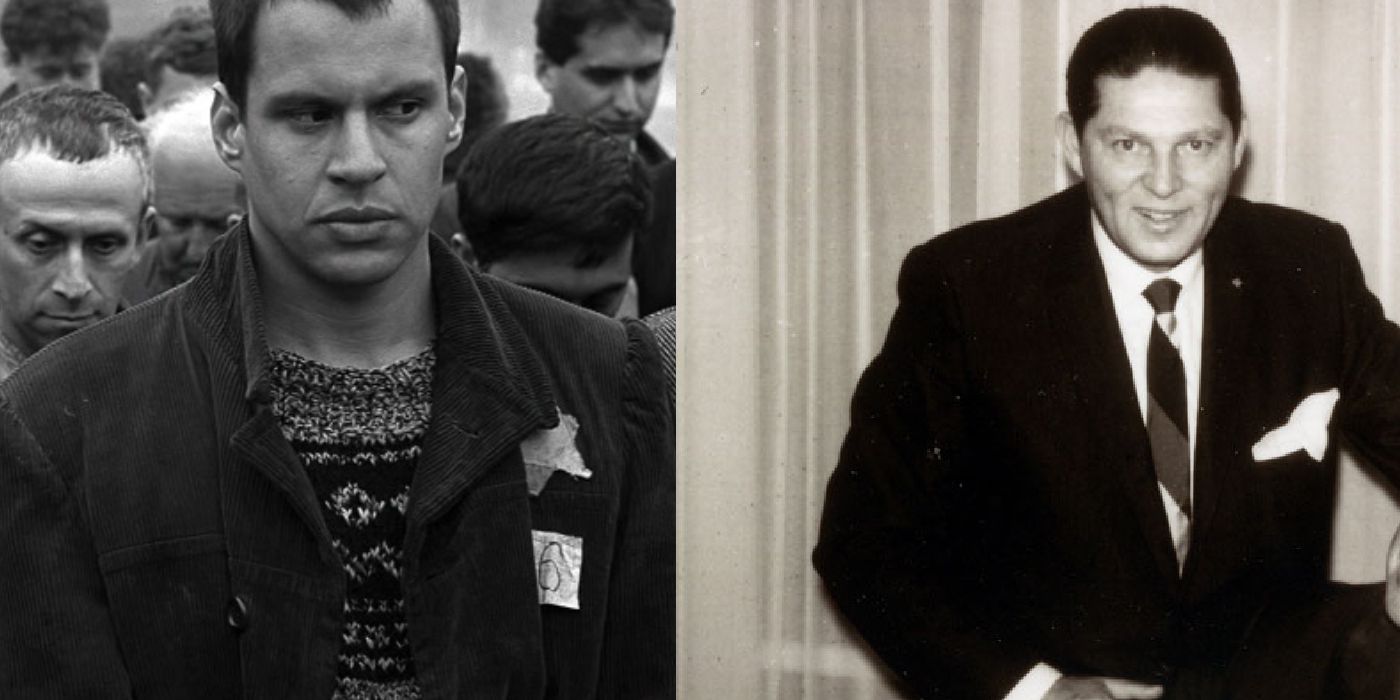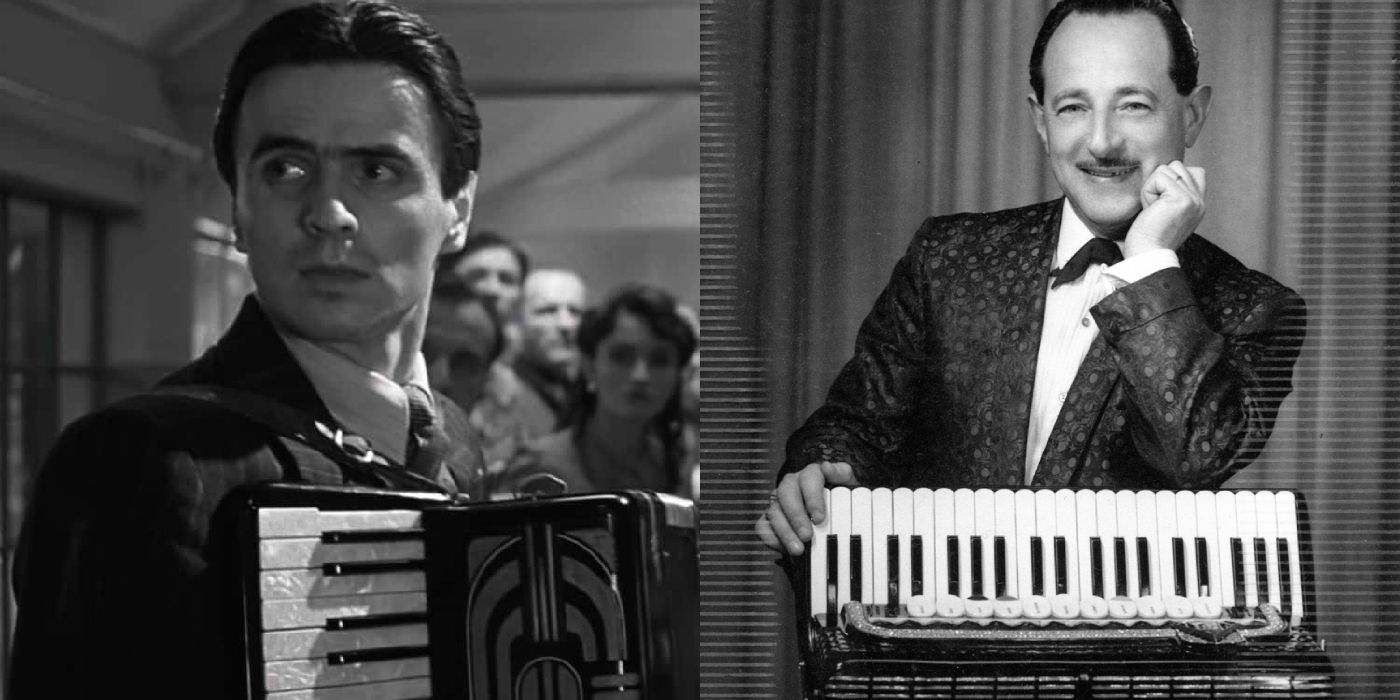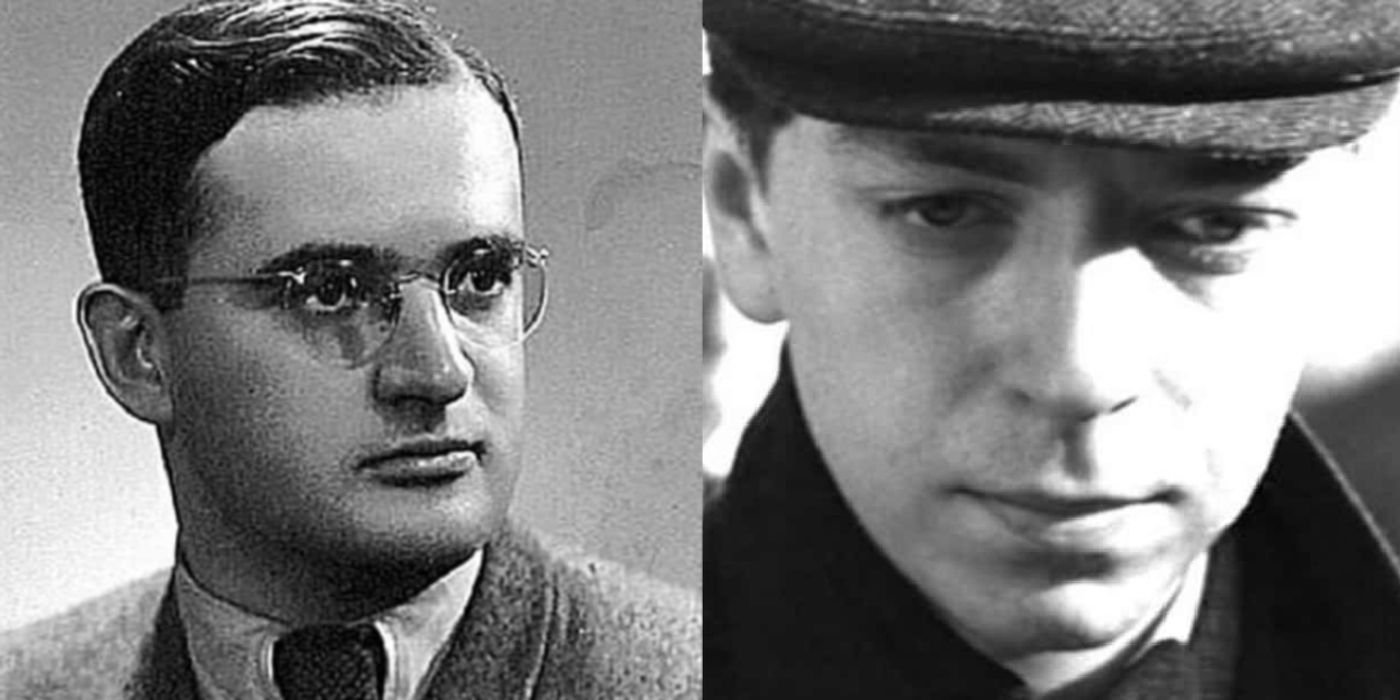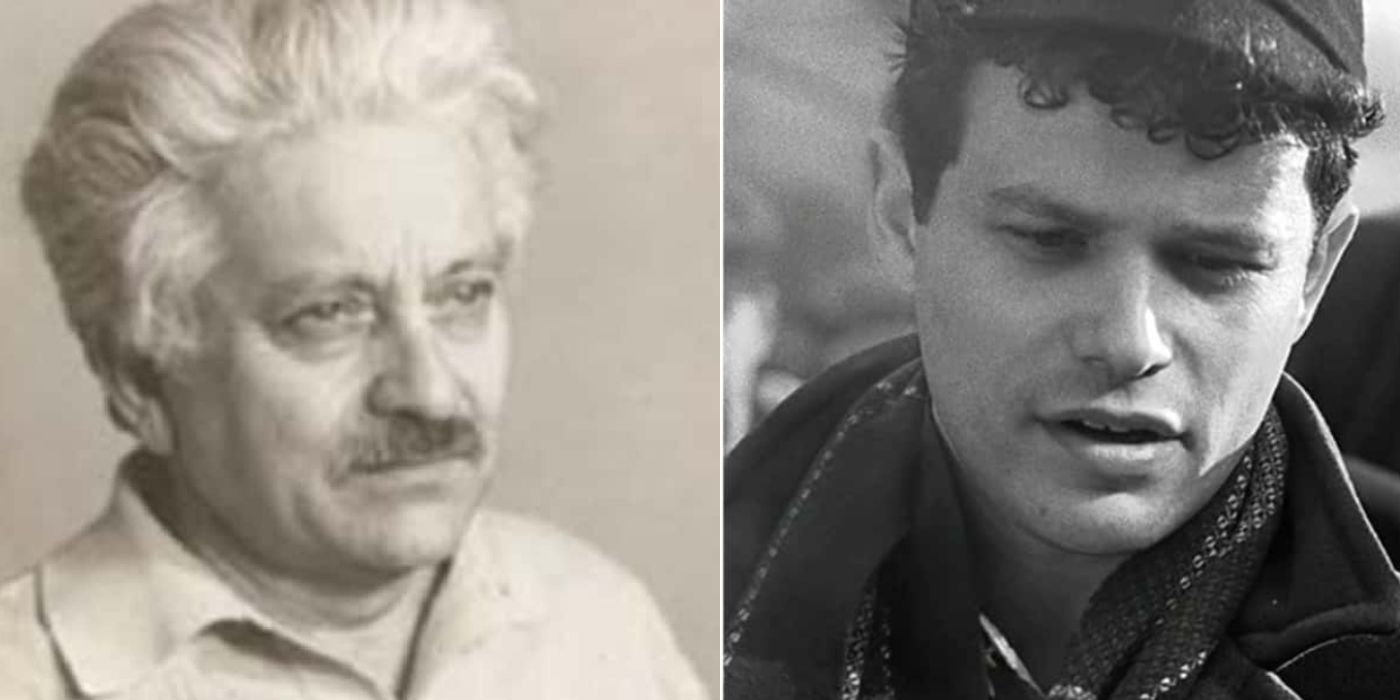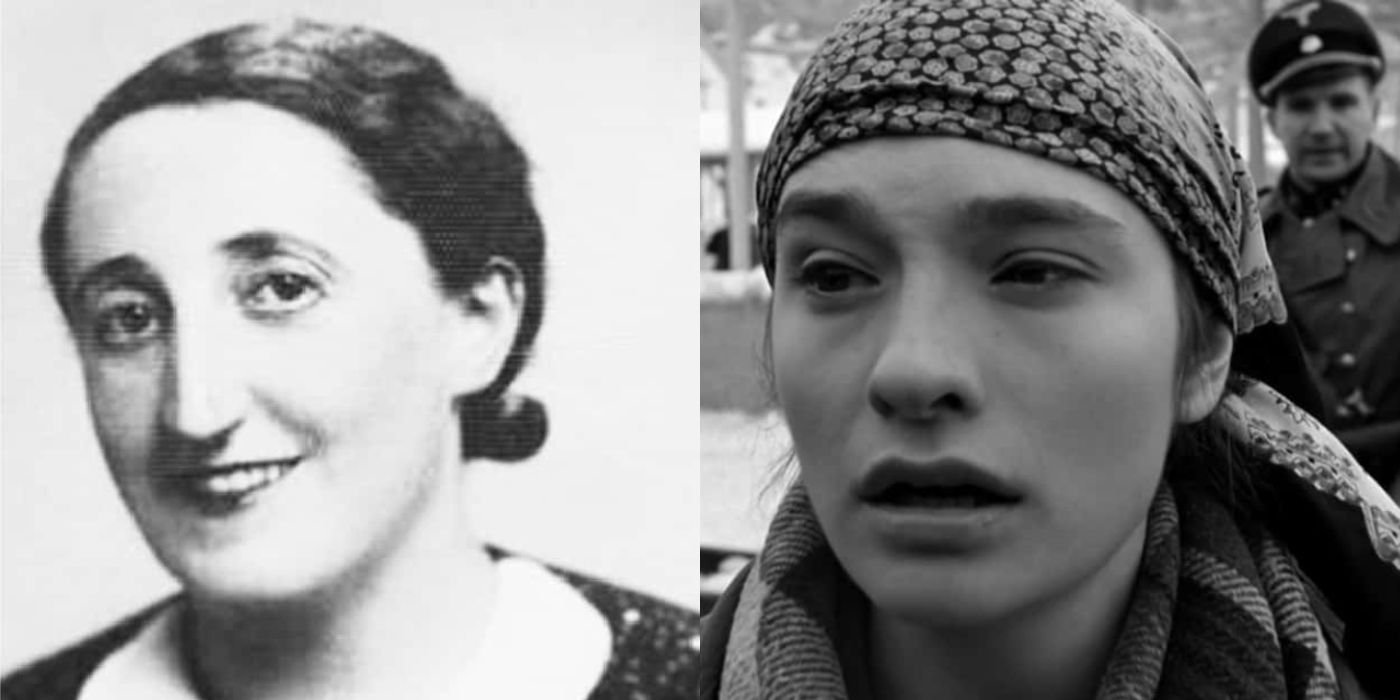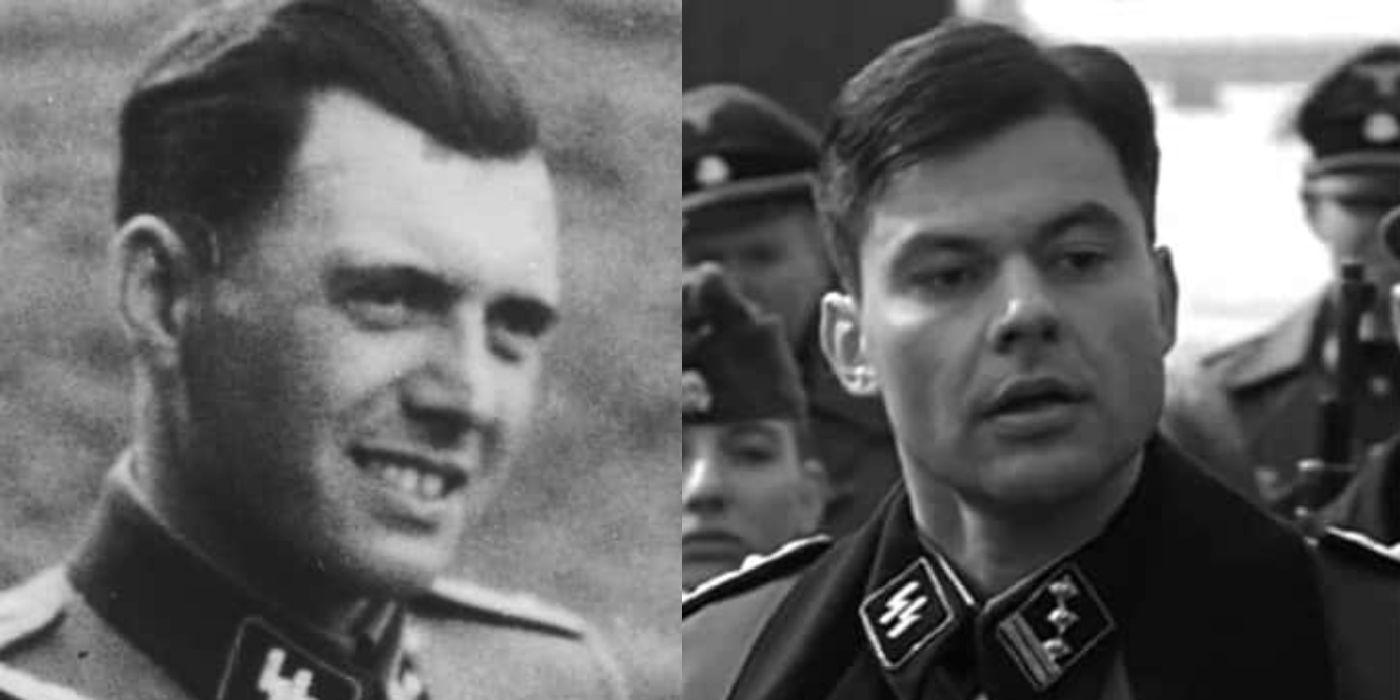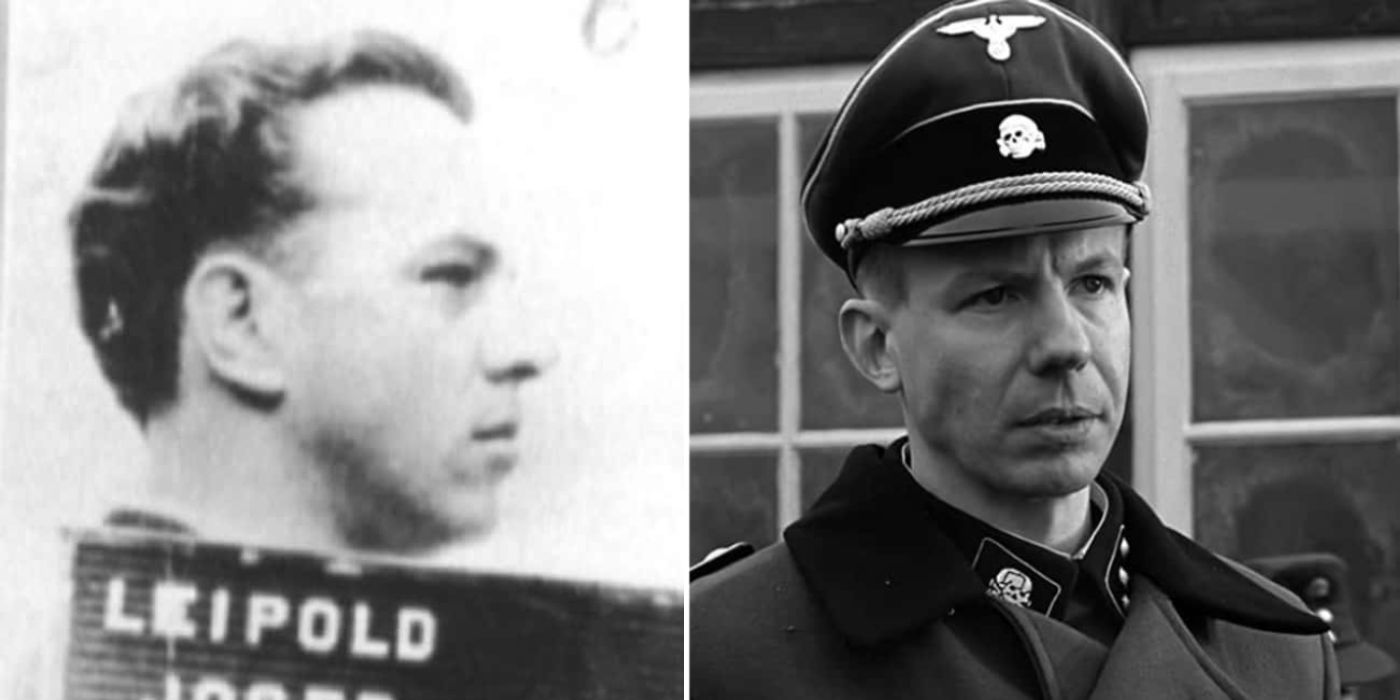Summary
- Schindler's List is a movie that depicts the true story of Oskar Schindler and how he saved over 1,200 Jews from Nazi execution in World War II.
- The film accurately portrays real historical figures such as Amon Göth, the sadistic commandant of the Płaszów labor camp, and Itzhak Stern, Schindler's Jewish accountant and close friend.
- The real-life figures depicted in the movie, like Emilie Schindler and Leo Rosner, played significant roles in supporting and assisting Schindler in his mission to save Jewish lives.
Schindler’s List portrays many real historical figures within its narrative, but it doesn’t tell the whole story of its entire cast of characters. The movie depicts the true tale of how German industrialist Oskar Schindler rescued 1,200 Jews from Nazi execution in one of the most stirring acts of humanitarianism during World War II. Schindler's List begins just before the war and follows the eight-year arc that sees its titular figure “befriend” the psychopathic Nazi commandant Amon Göth and become galvanized into action. It seeks to honor the stories of numerous camp survivors, who recall the acts of cruelty, humanity, and struggle that composed life in the Płaszów labor camp.
Schindler’s List is adapted from the 1982 novel Schindler’s Ark by author Thomas Keneally. While Steven Spielberg spent years trying to pass the project off to other directors, he eventually agreed to direct the movie The result is considered not only one of Steven Spielberg’s best movies but one of the greatest movies of all time. With its more than three-hour runtime, Schindler’s List is ambitious in scope and succeeds at representing numerous real-life stories and historical figures, including camp survivors and Nazi officers. However, there are still plenty of stories that went untold.
Oskar Schindler
The remarkable true story of Oskar Schindler’s rescue of more than 1,200 Polish-Jewish laborers is faithfully depicted in Schindler’s List. The affluent Schindler, a registered Nazi party member, used his wealth and German intelligence contacts to compile a list of Jews to work in his factory, saving them from execution. After the events depicted in the film, Schindler and his wife immigrated to Argentina and took up farming. He went bankrupt in 1958 and spent the remainder of his years living off care packages sent by the Jewish families he saved. Liam Neeson earned an Oscar nomination for his portrayal of the main character in Schindler’s List.
Amon Göth
Ralph Fiennes also earned an Oscar nomination for his performance as Amon Göth in Schindler’s List. Historical records confirm that Göth, as Commandant of the Płaszów labor camp, was every bit as monstrous as his portrayal. Göth was a narcissistic, psychopathic, and sadistic figure who took full advantage of his position of power in the camps to inflict chilling cruelty on the Jewish prisoners. The scene in Schindler’s List where he guns down prisoners from his villa balcony with a rifle is based on fact. At the end of the war, Göth was charged with war crimes. He was executed by hanging near the site of the former Płaszów camp.
Itzhak Stern
The Jewish accountant Itzhak Stern was introduced to Oskar Schindler at the start of the war, and the two worked closely together on the running of the factory and, eventually, the compilation of the list that saved Stern and his remaining family from execution. Their wartime friendship is faithfully depicted in Schindler’s List, with Oscar-winner Ben Kingsley playing Stern. After the war, Stern settled in Israel, where he became an advocate for greater recognition of Schindler’s work, even authoring a pamphlet on Schindler’s rescue activity. Schindler and Stern remained in correspondence until Stern’s death in 1969.
Emilie Schindler
Oskar Schindler’s wife Emilie shared in her husband’s sense of responsibility to the brutalized Jewish laborers. Emilie sold her jewelry to help buy food, clothes, and medicine for the interned. She also helped run a secret sanatorium in the Brünnlitz camp after Schindler’s 1,200 Jews were transported there. Following Emilie and Oskar’s move to Argentina and subsequent bankruptcy, Oskar Schindler abandoned his wife and moved back to Germany. Emilie lived out her days in Argentina on the farm she and Oskar had bought but returned to Germany for her final months in 2001. She is played by Caroline Goodall in Schindler’s List, and also appears herself at the film’s end.
Poldek Pfefferberg
Behind the scenes of Schindler’s List, the real Poldek Pfefferberg was a vastly important figure to the film, although his character only appears in a minor role, played by actor Jonathan Sagall. Pfefferberg was a close friend of Oskar Schindler’s who helped him secure goods on Krakòw’s wartime black market. As one of the 1,200 Jews Schindler saved, Pfefferebrg felt a responsibility to tell Schindler’s story. After moving to Los Angeles and changing his name to Leopold Page, Pfefferberg spent years lobbying Hollywood to make a film about Oskar Schindler’s work, to no avail.
One day, Thomas Keneally came into Pfefferberg’s leather goods shop, and Pfefferberg was able to convince the author to write a book about Schindler (via NY Times). Once the book was written, Pfefferberg worked tirelessly to try and convince Steven Spielberg to direct it. He claims to have phoned the director once a week for 11 years. Finally, Spielberg agreed, and Pfefferberg was brought onto Schindler’s List as a consultant. In Spielberg’s acceptance speech for the Best Director Oscar, he thanked Pfefferberg, saying, “He has carried the story of Oskar Schindler to all of us.”
Leo Rosner
Jewish musician Leo Rosner was forced to play his accordion for Amon Göth while interned at Płaszów. It was a tense affair to play for the volatile Göth, who might have snapped and murdered Rosner at a moment’s notice. Eventually, he and his family were placed on Oskar Schindler’s list and put to work at his factory at Brünnlitz. In the film, he is played by Pior Polk. After the war, Rosner moved to Melbourne, Australia, where he founded a 12-piece band and became a well-known musician. The real Rosner appears in Schindler’s List’s epilogue to pay respects to the Jerusalem grave of Oskar Schindler.
Mietek Pemper
Mietek Pemper was a Płaszów survivor who became close with Itzhak Stern and, eventually, Oskar Schindler. As Amon Göth’s personal secretary, it was Pemper who first alerted Schindler that he needed to begin producing munitions in order to keep his factory from being shut down. Pemper was a major collaborator in the compilation of the list. While many of Pemper’s recorded actions are attributed to Stern in the film, Pemper’s character does play a limited role, as portrayed by Grzegorz Kwas. Pemper testified against Göth in his 1946 trial and went on to become an inter-faith activist, specializing in Jewish-Christian relations. He also served as a consultant on Schindler’s List.
Joseph Bau
Due to Joseph Bau’s graphic design training, he was put to work lettering German signs and maps while imprisoned at Płaszów, although he also used his skills to forge documents and identity papers for use in escape attempts. Schindler’s List dramatizes his covert wedding to fellow prisoner Rebecca Bau, while the two were still interned at Płaszów. After the war, Joseph and Rebecca moved to Israel, where he became an accomplished artist and author. Bau also made several animated films, which saw him credited (via The Guardian) as the “founder of Israel’s animation industry.” Bau is played by Rami Heuberger in Schindler's List.
Diana Reiter
The brutal scene in Schindler’s List in which Amon Göth executes a Jewish engineer over an argument about the foundation of the barracks is, tragically, based in fact. The murdered woman was Diana Reiter, a Polish architect whose career had seen her design multiple buildings and work on the restorations of others in and around Kraków. The scene, in which Reiter is played by Elina Löwensohn, is just one of many instances reported by survivors of Amon Göth’s ruthless violence.
Dr. Josef Mengele
A chilling scene in Schindler’s List features a soft-spoken Nazi strolling down a line of assembled Jewish women and asking amiable questions like “How old are you, Grandmother?” The figure in question is notorious Nazi doctor Josef Mengele, as portrayed by Daniel Del Ponte. The scene represents Mengele’s practice of fielding unwilling Jewish subjects for his monstrous experiments. After the war, the doctor fled to Argentina, where he lived for 30 years before suffering an accidental death by drowning while swimming off the coast of Bertioga.
Josef Leipold
In 1944, Oskar Schindler successfully transferred the 1,200 Jews to a new factory in the Brünnlitz labor camp in occupied Czechoslovakia. The commandant at Brünnlitz was Josef Liepold. Schindler’s List, in which Liepold is played by Lugor Pistor, details how Schindler made it clear to him and his SS cohort that Brünnlitz was not to be run like a standard SS labor camp. Schindler requested that the SS make no contact with the laborers, nor did he allow them to enter the factory. Liepold deserted in May 1945 amid the Red Army’s approach, before being caught and executed for war crimes in 1949.
Sources: NY Times, The Guardian


